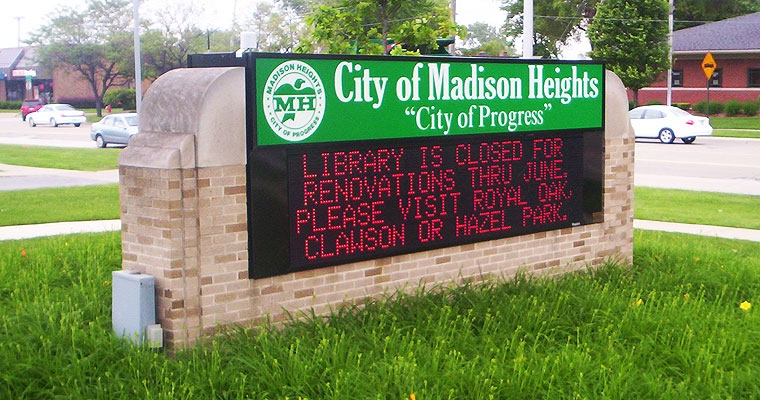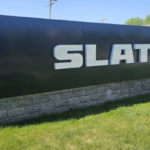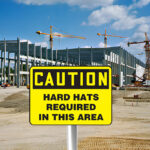A critical part of running a successful company is learning how to use different types of signage. In most cases, you’ll need to use more than one sign product to fulfill all of your business needs. One of the handy options is outdoor electronic advertising boards.
To get you started, we are going to cover all the essential aspects, like ways to use them, the basics of design, and their costs. So, read on for our beginner’s guide to outdoor electronic advertising boards.
A brief history of electronic signs
Did you know that the first signs that we know of were cave paintings?
Humans have been using symbols and images for ages to communicate with each other. Over time we just found more complex ways to do this.
We know that the ancient Egyptians, as well as the Greeks and Romans, began to use signs specifically for business such as workshops. And as trade and commerce gained speed through the Middle Ages, signage became more and more prolific.
New technologies like the printing press continually led to massive changes in this area.
One of the most significant innovations to date was the development of illuminated signs in the early twentieth century. It started with incandescent bulbs, moved to neon and fluorescent lights, and then to LEDs.
Outdoor electronic advertising boards 101
Now you can divide signage products into a wide variety of categories. There are indoor signs and outdoor signs, as well as electronic ones and conventionally printed ones. On top of this, there are a variety of different products under each of these groups.
To pick the right sign, you need to weigh all your options and all their characteristics carefully.
Nowadays, digital signage has become one of the top picks for any advertiser or a business owner. Everywhere you look, you’ll see shining lights, whether they are on electronic billboards, channel letters, or sign boxes.
One of the most popular of these is outdoor electronic advertising boards, which can also be called LED message centers. These are a computerized solution that you can program to display messages. Sign making companies fabricate them by mounting LEDs into an electronic board.
Because you control it with software, you can change the message at any time. And the content doesn’t need to be static. You could design it with motion effects like scrolling.
You can probably already guess that this comes with plenty of benefits.

The pros and cons of LED message centers:
Let’s look at the reasons why you should consider investing in outdoor electronic advertising boards:
- LEDs are available in an endless range of colors. People most commonly use red, but you can choose any you want and even combine different colors.
- The signs are known for being extremely flexible and versatile.
- You can change the content of the sign at any time of the day whenever it is necessary.
- The board can be programmed with animations like motion effects.
- These products are relatively cost-effective when compared to other types of digital signage.
- Digital displays are great at drawing people’s interest and attention.
- LEDs are energy-efficient and long-lasting lighting options.
- You can use scheduling features to program the content to change automatically. For example, you can set it to display a specific message from 5 to 6 pm on a Monday.
- Thanks to the illumination, your signs will be visible at any time during the day or night.
- The boards themselves are quite durable and have a good life expectancy.
- You won’t need to replace the sign as often, which can help you save on fabrication and labor costs.
- Most of them come with automated dimming and focusing systems to help you optimize visibility.
- Overall, digital signs have a reader recall rate of 83%.
But there are some cons to LED message centers too:
- Even though they are relatively energy-efficient, they will still use electricity.
- You will need to make a substantial initial investment that will cost more than most non-digital signs.
- These signs are more challenging to install.
- You need to connect the sign to power and to a computer that runs the software.
Overall, the disadvantages don’t seem to outweigh the advantages depending on your specific circumstances.
Best ways to use digital signs:
Yes, LED message centers are incredibly versatile. But this doesn’t mean that they are suitable for all possible aims. They will work much better to fulfill particular objectives than others.
Signs can be divided into these main categories: directional/informative, regulatory, ceremonial, warning, and entertainment. Usually, one single product has to be centered around one of these.
However, with LED message centers, you don’t have to compromise. Because the content can change continuously, you can use one board for several or even all of these roles if you want to.
To help you get a better idea of the possibilities, let’s look at one case study. If you are a school, you can use a message center for several purposes like:
- Advertising school events such as a concert
- Wishing your team well for the next game
- Informing parents of an upcoming parent-teacher conference
- Warning your students of an incoming heatwave
- Reminding people of rules for the drop of area
- Directing guests around the grounds
It’s no wonder that these signs are so popular with organizations like churches and colleges that have a lot to communicate and have frequent updates. But you can use them for almost any type of business such as grocery stores.
Cost of LED message centers
The question of cost is always a crucial one. We all want to get bang for our buck. And as a business owner, you know that this means you will have to work with budgets.
So how much does an LED message center cost?
First, you need to know that there are lots of factors that will impact the price. You can think of it as a sliding scale where choosing some features will make it more expensive and some less so.
In short, the board will cost more as you increase the size, the number of colors, the resolution, the speed of the connection, the amount of customization, and the decorative elements in the design.
Significantly, it will also be impacted by the way you choose to mount the sign. For example, are you going to use a masonry base or not? Are you going to use one pole or more in the construction?
So it’s pretty complicated to give an average price. However, here are some guidelines for you to consider.
A sign that is 3’4″x7’7″ with a pixel pitch of 13mm will cost about $23,431. One board that measures 5’6″x10’9″ with a pitch of 20mm will put you back $30,700. And a billboard size sign of 13’11″x47’9″ with a 20 mm pitch will be more or less $224,551.
But whenever you are working with signs that are so versatile, you need to consider long-term savings. Luckily, with LED message centers, you probably won’t have to get a new board for many years to come.
It is much trickier to make changes or updates to other types of signs without replacing the whole thing.

In other words, you should think of this as a long-term investment.
Mix and match
One crucial consideration is whether or not you are going to use the LED message center on its own. There are good reasons why people often combine them with other types of signs.
The most significant is that these boards are pretty expensive. So you might not be able to afford the size that you want. Because they can be costly, you probably won’t be able to use all the colors, nor the background, nor the graphics that you want.
Therefore, it can be fantastic to compromise by using a smaller message center with a larger printed sign.
The recommended solution is to print the permanent content like your company’s name and basic details on the static signage. Then you can use the LED board to attract additional attention, give updates, and short-term advertisements.
Vital terms for LED message centers
Most of the time, signs are as just as good as its design. This is how you really make an impact on your audience and get the most out of the product.
To achieve this, there are several features of the content and the board itself that you need to work on.
We can’t cover everything you need to know, but it can help to start learning about the key terms and concepts. It will help you design the board and communicate with your sign company.
Pixel pitch
The pixel pitch is essentially the resolution of your LED message center. One pixel is one grouping of LEDs. And the pitch is the distance in millimeters from one of these to another. The tighter you pack the pixels, the higher your resolution will be.
To choose the right ratio, you need to consider the viewing distance, the resolution you want, the size, and the costs.
As a rule of thumb, the farther away your audience will be, the higher the pitch should be.
Viewing distance
Another critical term to consider is the viewing distance, which is the distance between the observer and in this case, the sign they are viewing.
Preferably, you need to try to figure out what the optimal position will be. This is the place where the content will be visible and legible. But it also needs to look attractive.
Matrix
No, we are not talking about the film.
In short, the matrix is the number of pixels high by the number of pixels wide your board will be. These numbers will determine how much content you can display on the LED message center at one point in time.
Brightness
Whenever it comes to illumination, you have to consider the brightness. The concept relates to the intensity of light emanating from a surface. You will need to agree on this with your sign company.
Remember that you’ll need to turn up the brightness for outdoor electronic signs during the day.
One excellent feature of programmable LED message centers is that they can change the brightness to fit the time of day automatically.
Choosing your content
As with any other type of sign, you need to craft the content carefully. You can follow many of the same principles that you use for different types of signage. However, there are some unique possibilities that you can play with.

Here are some of the crucial elements of the content that you can customize:
- Colors
- Graphics
- Text
- Motion effects
- Animations
- Text formatting
- Font
- Letter-size
- Background
In general, you want to keep the content for the sign simple. Doing this will help you save costs, but also help you to make your board more effective. There will be less risk of the main message getting lost in a jumble of text and images.
Hooking up your LED message center
As you might guess, the installation process is quite different for digital signs than for non-digital ones. It’s not as simple as just securing it with some screws.
First, you need to connect the board to a power source. That’s why your sign company will need to have a professional on their team to help you get this sorted.
Second, you’ll have to hook the sign to a computer or laptop that can run the necessary software. You need to do this to program and control the content for the LED message center.
Most of the time, you will need to connect it with an ethernet cable. But some manufacturers also have remote options.
Remember that the programming and software will depend on the specific product that you get.
24-hour exposure
Illuminated signs like LED message centers play a crucial part in advertising strategies. These outdoor electronic advertising boards will help you draw in the crowds, no matter the time of day. They help you highlight your critical messages.




